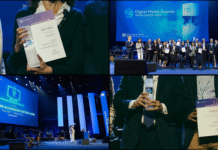The Digital Media India 2018 Conference, held from 9 to 12 February in Mumbai, discussed ways to refurbish content strategies for publications on the digital platform. One of the key topics of discussion was paid content on the digital platform. Today, there are many sources around the globe that are offering paid content with various revenue models. However, the Indian digital platform continues to shy away from the idea of having paid content. This mindset may change gradually if trust is build along the way.
The average age of digital subscribers opting for paid content is around 30 years. Thus, the content strategies have to be designed keeping them in mind. In 2017, this age group showed 34% surge in subscriptions in Europe. Generally, all digital publishers share free content in India and around the world but publishers have now begun to launch initiatives where exclusive content will be placed under a paywall. This content will be absolutely ad-free. Such a combination of free, premium content is classified as the ‘freemium’ model. These models have proved to be successful in generating revenue on digital platforms. The reader is hooked by initial free trials and can later opt for subscription. Premium content will have additional features like dedicated columns, editorials, analytical articles and investigative stories and so on.
The conference also had presentations from representative of publishing companies who have had a proven track record of engaging and increasing subscribers on their digital platforms.
The Quint goes the social media way
The Quint was first launched on Facebook in January 2015, two months before its website came into existence. Till today, Facebook has remained its major field of operation. Quint’s strategy is mobile and social network and some of its content is cross-posted on the website and social media. They keep a lot of content for individual platforms. For example, they don’t post news and straight text from wires on Facebook; instead, they use the platform to push their original content, especially videos and news videos. On Twitter, they distribute more opinion-driven content and also use it as a news alert service, for ‘breaking news’ content. Avinash Iyer, senior manager – Content Marketing, The Quint stated, “About 75% of our traffic comes from mobile browsers, so even though the outlet has a card-based app powered by Quintype, this product has not been our major focus so far. Our readers are mostly from the young population, thus there is greater reliance on Facebook and social medium as we see good traffic coming from these.”
VG’s shift from print to digital
Verdens Gang(VG), a Norwegian tabloid, managed to cope with the changing landscape of newspaper industry in Norway. Gard Sterio, editor, VG in his address during the event stated that 65% of traffic on their website consists of mobile users. In 2016, VG changed its content strategy from display to digital. The changeover reorganized the existing workforce, so that the company could utilize the digital landscape. From 2016 onwards, VG is on a mission to shut down their print edition and completely move towards digital newspaper. Their move is quite evident in ad revenue figures of last year. The year 2017 saw 90% revenues generated from the digital platform and just around 10% from print. VG’s digital edition operates on a freemium model and the company uses all its digital platforms to reach out to its target audience, like Facebook, Google, Twitter and even Snapchat. VG runs its news coverage as a blend of text and video. They have a separate audience development department that decides whether a news story should be available for free or only to its premium subscribers. For the same, they have started developing investigative stories, in order to strike a balance between exclusive and regular content. Sterio also believes that to bring your audience under a paywall, a publisher should have a set of reporters dedicated to the exclusive stories that eventually should sustain.
He concluded by stressing the fact that even today content is the king and to make it happen for them, they restructured their models. Today, VG is very popular among the people of Norway. Around 80% of the traffic generated on their website is direct and not through social engagement forums like Facebook or Twitter. Facebook accounts for a meager 4% share in their digital readership. Currently, VG has 145,000 subscribers on the digital version of the tabloid. In terms of page views, they get 800,000 views per day and 22.5 million page views per month.
Facebook opts for local initiative
Facebook has come up with its content-specific initiatives for filtering fake content on the website. It has initiated pass projects that filter all the news available on the website by referring to set parameters over the news being reported. If those parameters are not met, the news may be taken out. Another interesting initiative Facebook seems to have taken up is the Go Local Initiative, where the social media platform will show localized content based on the area. This is an idea that has been taken up by many news websites and apps in Europe.
While spends over digital platforms are soaring and traffic picking up too, the actual number of people viewing the pages has seen a sharp fall. Speakers and panelists at the conference observed:
– While social media is gaining traffic for the pages, it is mostly inorganic traffic.
– Google has still managed to stay on the top globally, witnessing a healthy rise in traffic with the right audience.
– Google will be soon implementing ad-blocking in its Chrome browser that enjoys a share of more than 70% among browsers used on the internet.
– Ad revenues will shrink in time.
Paid content
The average age of the digital subscribers of the paid content are around 30 years. Thus, the content strategies have to be designed according to young subscribers. This age group has seen a 34% growth in subscriptions in Europe in 2017. Generally, all the digital content is free but publishers have started to launch pricing under freemium model that is combination of free + premium. Here most of the website has access to a user but additional features like dedicated columns, editorials and other may not be have access.
Overall, publishers need to get smarter and adapt to the digital wave. The Wire is one such platform which runs on a free model and has no plans to offer a paywall. Their revenue model is donations from readers and other corporate sectors. They have managed to use their limited resources in an optimum manner with just a small team of 60 people. Facebook is globally not doing well in terms of bringing traffic on a website but in India, there are newspaper and digital publishers like Dainik Bhaskar, The Quint, Malayalam Manorama, Navbharat Times and The Hindu that invest aggressively in social media to promote their digital platforms.


















